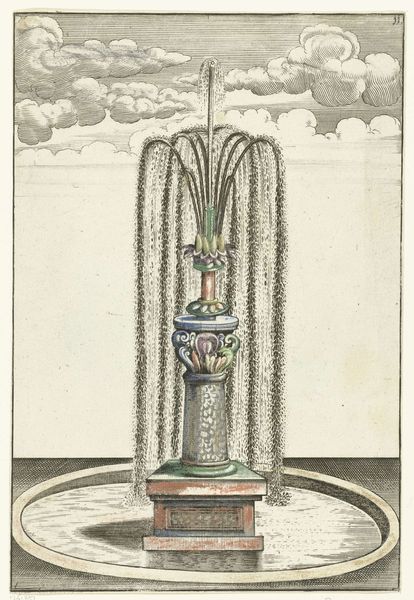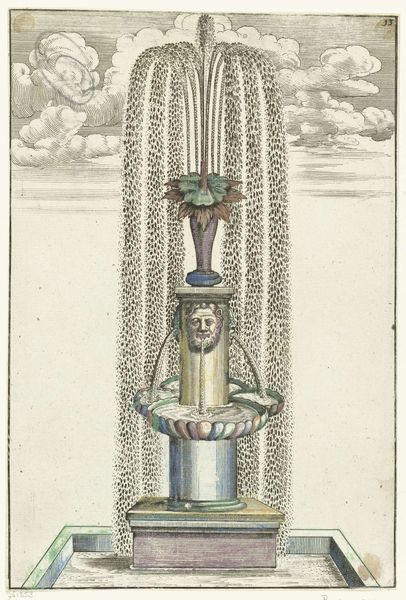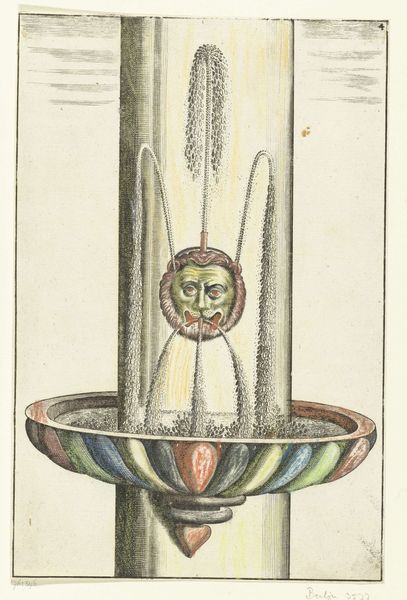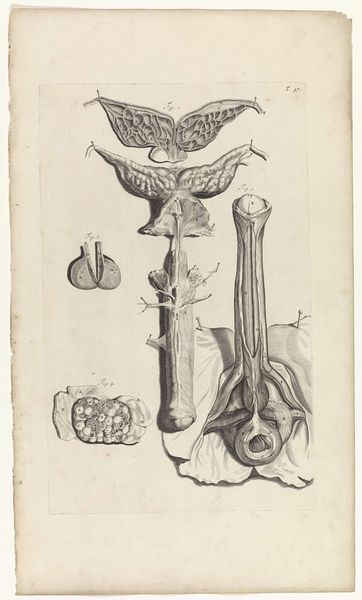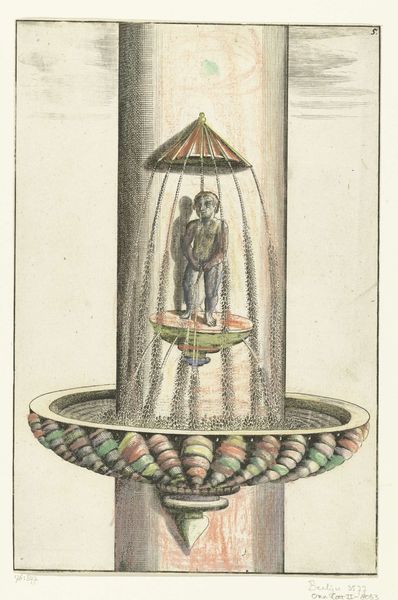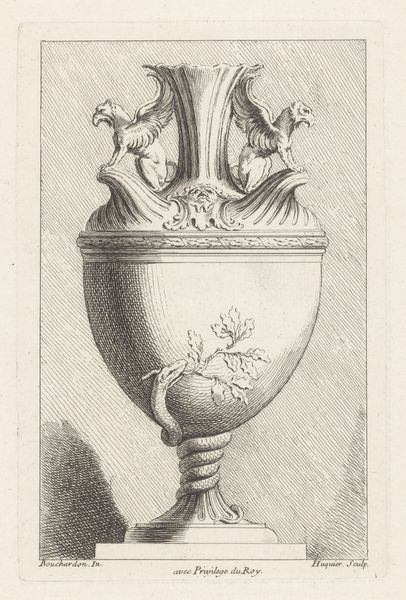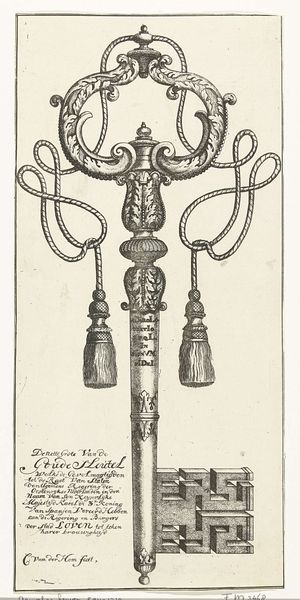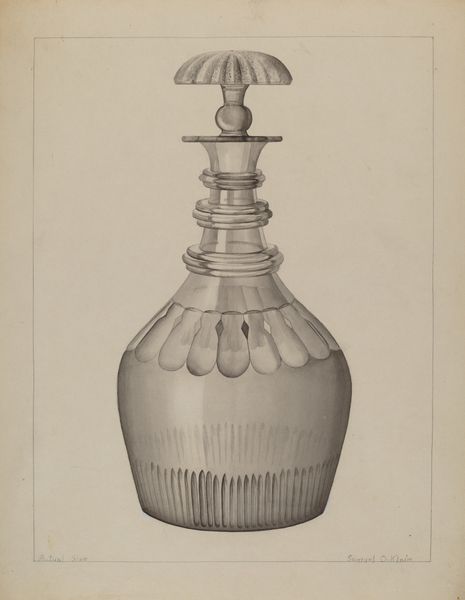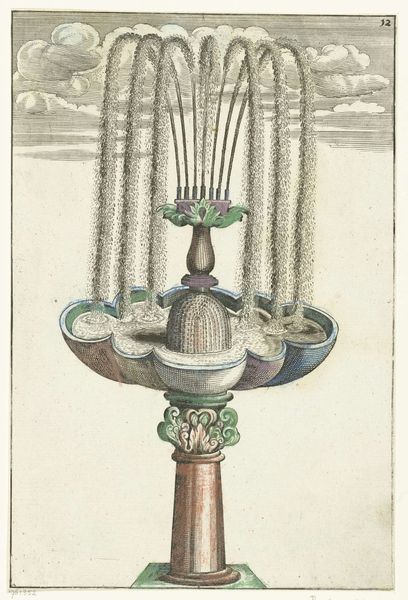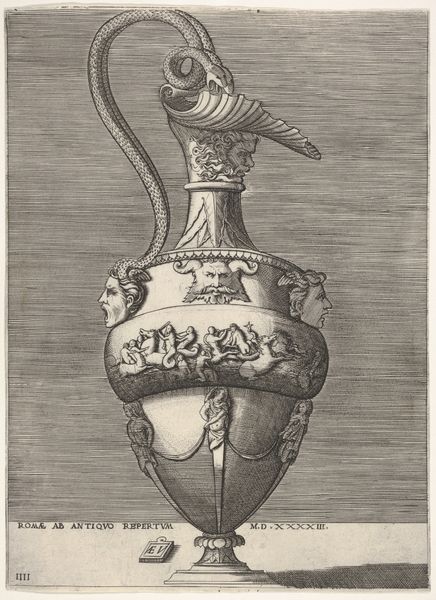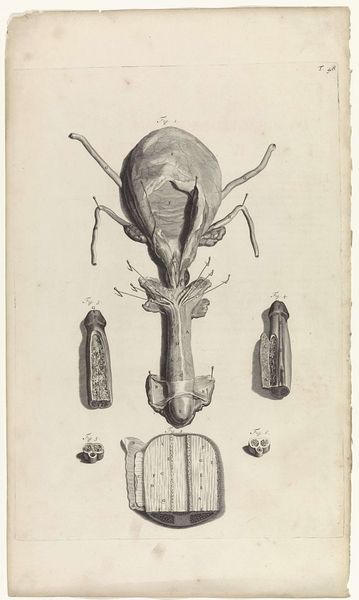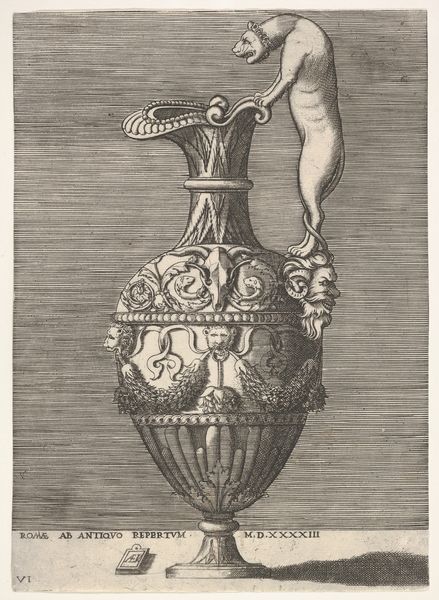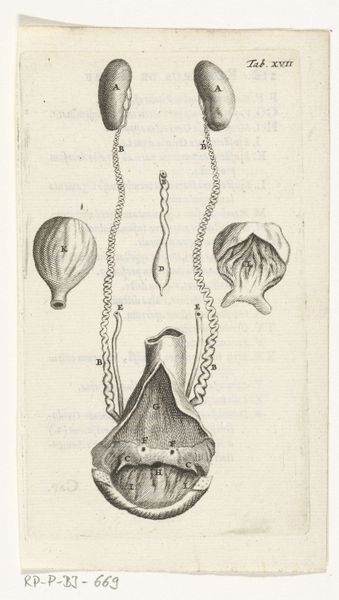
print, engraving
#
baroque
# print
#
traditional media
#
caricature
#
watercolour illustration
#
engraving
Dimensions: height 269 mm, width 179 mm
Copyright: Rijks Museum: Open Domain
Curator: Immediately, I find this intriguing. The texture creates this palpable sense of falling water, doesn't it? Editor: It certainly does. We're looking at a piece entitled "Kleine fontein," or "Small Fountain," dating back to 1664. The artist, while currently listed as Anonymous, captured this fountain scene through engraving. It's enhanced by watercolor illustrations to capture its essence. Curator: An anonymous source… almost feels appropriate considering fountains are often these communal fixtures in a city or garden. Like archetypal wells for communities and a public spectacle. How is this Baroque fascination with extravagance reflecting larger dynamics of wealth or power? Editor: Precisely. These fountains become spectacles, manifestations of the control humans have over nature, yes, but also a deliberate public display of power for rulers. Note that, fountains during this era often became symbols tied to political strategies. This almost caricatural image style then feels subversive. Curator: Right, the upward surge visualized as control contrasted to water falling. We see representations of clouds behind and the way that light and shadow are manipulated adds layers to the visual drama. But let's not forget water, for so many eras, represents purification or life renewal… This juxtaposition would have carried meaning for 17th-century viewers? Editor: Undoubtedly. The playful combination could prompt contemplation. I find myself pondering the intention behind producing an engraving, a medium known for distribution, as opposed to unique artistry. Were these perhaps designs circulated among landscape artists? Curator: Possibly! This act of creating prints turns something unique – like a sculpted fountain – into accessible cultural capital that’s much more broadly consumed. The work has indeed layered visual and philosophical resonance. Editor: Definitely. I walked in expecting ornate Baroque ostentation. Now, though, I am left with nuanced pondering around community, public representation, and creative dissemination that has persisted beyond Baroque artwork's historical context.
Comments
No comments
Be the first to comment and join the conversation on the ultimate creative platform.
